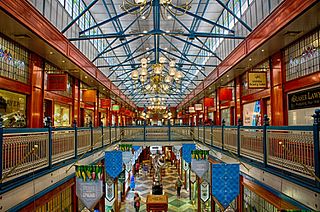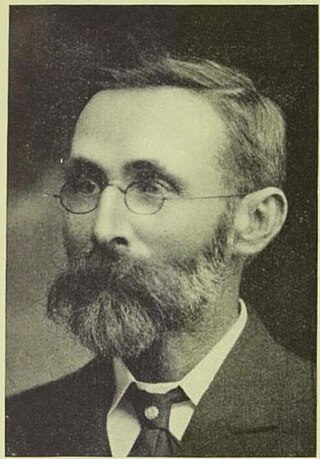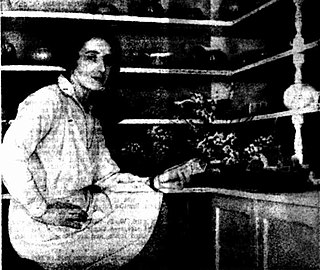
Eugène Atget was a French flâneur and a pioneer of documentary photography, noted for his determination to document all of the architecture and street scenes of Paris before their disappearance to modernization. Most of his photographs were first published by Berenice Abbott after his death. Though he sold his work to artists and craftspeople, and became an inspiration for the surrealists, he did not live to see the wide acclaim his work would eventually receive.

South Sea Islanders, formerly referred to as Kanakas, are the Australian descendants of Pacific Islanders from more than 80 islands – including the Oceanian archipelagoes of the Solomon Islands, New Caledonia, Vanuatu, Fiji, the Gilbert Islands, and New Ireland – who were kidnapped or recruited between the mid to late 19th century as labourers in the sugarcane fields of Queensland. Some were kidnapped or tricked into long-term indentured service. At its height, the recruiting accounted for over half the adult male population of some islands.

The State Library of Queensland is the main reference and research library provided to the people of the State of Queensland, Australia, by the state government. The Library is governed by the Library Board of Queensland, which draws its powers from the Libraries Act 1988. It contains a significant portion of Queensland's documentary heritage, major reference and research collections, and is an advocate of and partner with public libraries across Queensland. The Library is at Kurilpa Point, within the Queensland Cultural Centre on the Brisbane River at South Bank.

Maxwell Spencer Dupain AC OBE was an Australian modernist photographer.

Harold Pierce Cazneaux, commonly referred to as H. P. Cazneaux, was an Australian photographer; a pioneer whose style had an indelible impact on Australian photographic history. In 1916, he was a founding member of the pictorialist Sydney Camera Circle. As a regular participator in national and international exhibitions, Cazneaux was unfaltering in his desire to contribute to the discussion about the photography of his times. His career between the Wars established him as "the country's leading pictorial photographer".
Charles Page is a Brisbane-based documentary photographer, and lecturer at the Queensland College of Art. He studied at Griffith University where he got a PhD.

Brisbane Arcade is a heritage-listed shopping arcade at 160 Queen Street through to Adelaide Street in the Brisbane CBD, City of Brisbane, Queensland, Australia. Designed by Richard Gailey Jr. and constructed by J & E L Rees and Forsyth & Speering from 1923 to 1924, the arcade opened on April 16, 1924. It is the oldest and grandest shopping arcade in Brisbane. It was added to the Queensland Heritage Register on 21 October 1992.
The Deutsche Fotothek is a picture library in Dresden, Germany, located in the Saxon State Library. It holds more than two million images. Its strengths are in art, architecture, music, geography, technology, the economy, and the Saxony region. Its collection came from institutions, companies, and individuals such as Hermann Krone.
John Gollings, is an Australian architectural photographer working in the Asia Pacific region.
Mark Strizic was a 20th-century German-born Australian photographer, teacher of photography, and artist. Best known for his architectural and industrial photography, he was also a portraitist of significant Australians, and fine art photographer and painter known for his multimedia mural work.
Doug Spowart is an Australian photographer. He has a Master of Photography and is an Honorary Fellow of the Australian Institute of Professional Photography (AIPP). His work has been exhibited in Australia and internationally. He is the author of numerous photography books and artist books. His artist books are held in gallery collections throughout Australia.

Henry King was an English-born Australian photographer, known for his studies of Australian Aboriginal people and his views of Sydney. King was one of Australia's most significant early photographers, described by the Australian Photographic Review as "stand[ing] high in the esteem of the craft".

South Brisbane Library is a heritage-listed former library at 472 Stanley Street, South Brisbane, City of Brisbane, Queensland, Australia. It was designed by Francis Drummond Greville Stanley and built from 1881 to 1902 by W Macfarlane. It is also known as South Brisbane School of Arts, South Brisbane Mechanics Institute, South Brisbane Technical College, and South Brisbane Post & Telegraph Office. It was added to the Queensland Heritage Register on 21 October 1992. It now houses the Griffith University Film School, which forms part of the Queensland College of Art.

Nellie (Nell) McCredie (1901—1968) was an Australian architect and potter. One of her works Uanda is listed on the Queensland Heritage Register. Her artworks are held in a number of major Australian galleries.

Carl Magnus Oscar Friström, generally known as Oscar Fristrom, was a portrait painter and art teacher born in Sweden, who had a substantial career in Queensland and South Australia, and was best known for his depictions of Aboriginal Australians.

Vincent Price was a railway architect in Brisbane, Queensland, Australia.
Frank Corley was a New Zealand-born commercial photographer who worked in South East Queensland, and primarily Brisbane in Australia. Corley was one of a number of commercial house photographers who worked in Brisbane from the late 1950s onwards, selling photographs of suburban homes to their owners, often in the form of calendars.

Robert W. Tebbs (1875–1945) was an American photographer professionally active in the early to mid-twentieth century who specialized in architectural photography. Tebbs is most noted for his 1926 historical photo-essay of the plantations of Louisiana.
Wesley Stacey was an Australian photographer and photojournalist who was a co-founder of the Australian Centre for Photography. Exhibited widely, including at the Serpentine Gallery, London, Art Gallery of New South Wales, and a retrospective at the National Gallery of Australia in 1991, his work has been collected by the NGA, the National Gallery of Victoria and the AGNSW.

Graham S. Burstow was an Australian photographer. He is known both for his photographic practice and for his service to organisations and photographic competitions, for which he received a Medal of the Order of Australia in 2004. He exhibited widely, both in Australia and overseas, and three photographic books were published that were devoted to his work.












